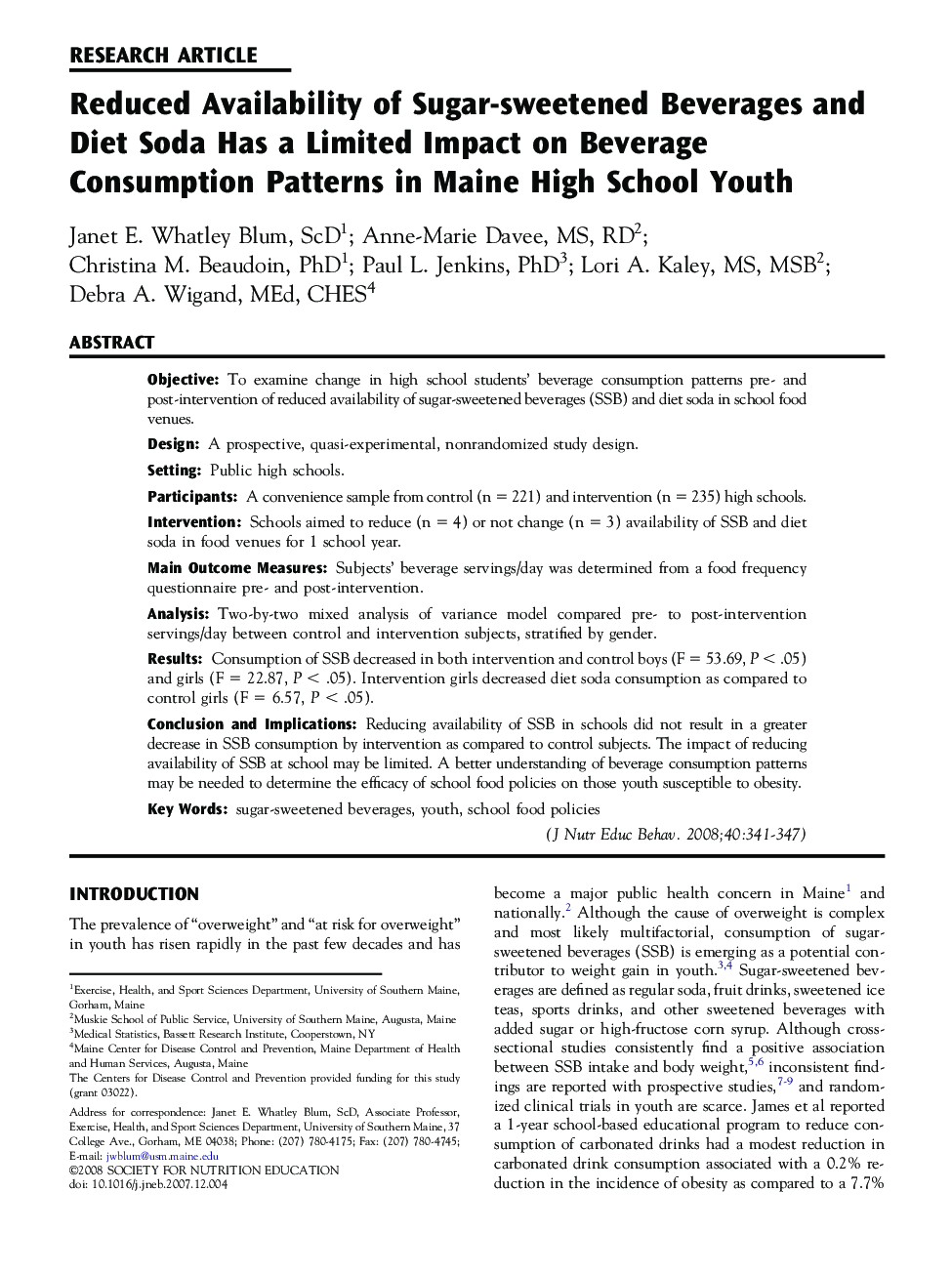| Article ID | Journal | Published Year | Pages | File Type |
|---|---|---|---|---|
| 363169 | Journal of Nutrition Education and Behavior | 2008 | 7 Pages |
ObjectiveTo examine change in high school students' beverage consumption patterns pre- and post-intervention of reduced availability of sugar-sweetened beverages (SSB) and diet soda in school food venues.DesignA prospective, quasi-experimental, nonrandomized study design.SettingPublic high schools.ParticipantsA convenience sample from control (n = 221) and intervention (n = 235) high schools.InterventionSchools aimed to reduce (n = 4) or not change (n = 3) availability of SSB and diet soda in food venues for 1 school year.Main Outcome MeasuresSubjects' beverage servings/day was determined from a food frequency questionnaire pre- and post-intervention.AnalysisTwo-by-two mixed analysis of variance model compared pre- to post-intervention servings/day between control and intervention subjects, stratified by gender.ResultsConsumption of SSB decreased in both intervention and control boys (F = 53.69, P < .05) and girls (F = 22.87, P < .05). Intervention girls decreased diet soda consumption as compared to control girls (F = 6.57, P < .05).Conclusion and ImplicationsReducing availability of SSB in schools did not result in a greater decrease in SSB consumption by intervention as compared to control subjects. The impact of reducing availability of SSB at school may be limited. A better understanding of beverage consumption patterns may be needed to determine the efficacy of school food policies on those youth susceptible to obesity.
